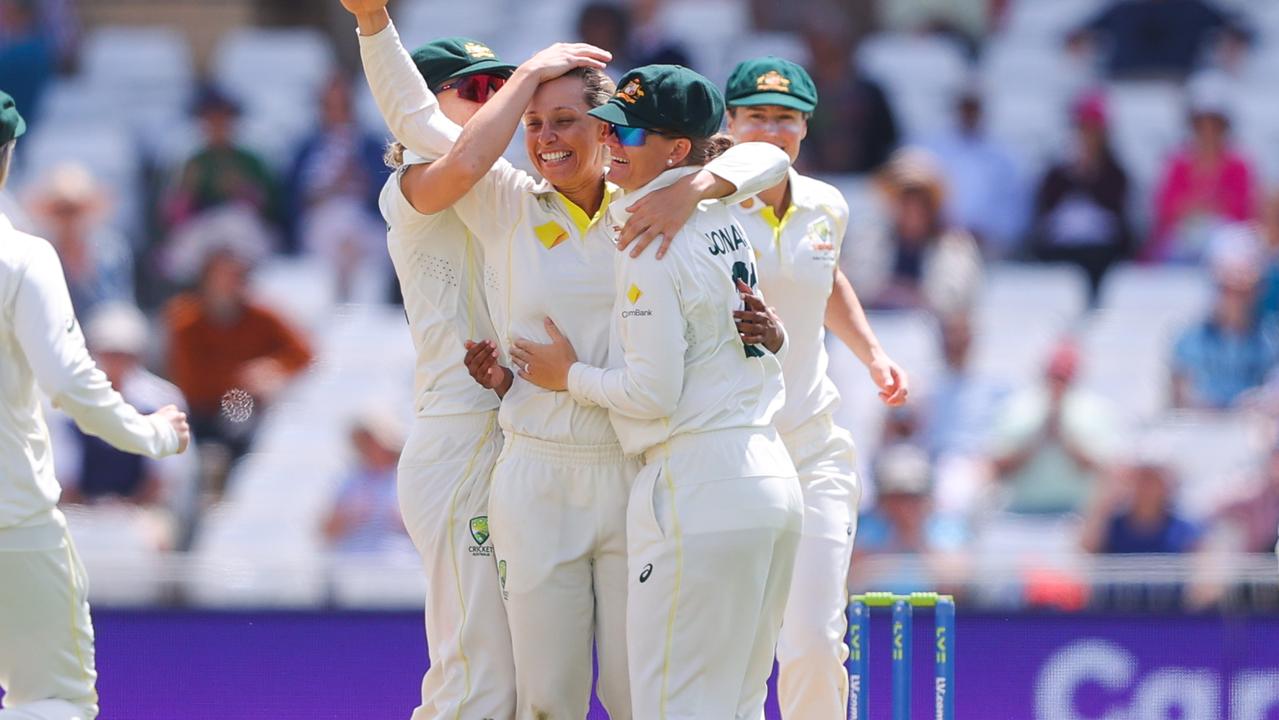What Cummins’ India triumph means for the Ashes summer

- by Admin
- January 7, 2025

At the same time, concerns about Josh Hazlewood’s fitness next summer have been assuaged somewhat by Scott Boland’s outstanding series against India. Boland is 35, but has played far less Test cricket than his pace counterparts, and now shapes as a major weapon on Australian pitches against many of the same England players he dominated in 2021-22.
England’s old timers and new blood
The recent emergence of hamstring troubles for England’s captain Ben Stokes, who will be 34 by next summer, have overtaken his former knee complaint to provide a reminder that he is far from invincible.
Nonetheless, Stokes has been well reinforced over the past year by a bevy of fresh talents. Pacemen Gus Atkinson and Brydon Carse can both bowl over 140km/h with bounce and are also useful with the bat. Jamie Smith, meanwhile, has ended the wicketkeeper debate between Jonny Bairstow and Ben Foakes, with his powerful back foot game well-suited to Australia.
England great Joe Root continues to pile on the runs.Credit: Reuters
And Joe Root, 34, is batting as well as he ever has. A Test century or two would put the capstone on what has been a top-drawer career in every other part of the world.
A quick game’s a good game?
As Australia’s pace attack has aged, pitches in this country have grown livelier at both domestic and international levels. The creation of a harder-wearing Kookaburra ball, essentially a facsimile of the Dukes that holds its shine and seam for far longer, has also contributed to tougher conditions for batting, something underlined by how only one of four Tests this summer got to day five.
All these factors mean that fast bowlers are in the ascendant, but spin is somewhat less vital. Nathan Lyon has never bowled fewer overs in a series where he’s played four matches or more than the 122.4 he delivered this summer. His next fewest was 137.1 in the 2015 Ashes, which was also played on seaming decks.
That’s a point worth noting for England, who since Graeme Swann in 2010-11 have not produced a tweaker to contribute meaningfully on these shores. Shoaib Bashir is the current No.1 slow bowler for England, but as it stands he may find himself left out while Root and Jacob Bethell bowl part-time spin when needed.
The Indian summer between
Before the Ashes, England will square up to India on home soil. That battle will fascinate in part because India are currently in a battle between their ageing warriors and a hungry new guard, especially with the bat.
It is hard to see Rohit Sharma getting to England, while Virat Kohli’s weakness outside the off stump in Australia will be of great interest to Stokes’ men. At the same time, the likes of Yashasvi Jaiswal (who dominated England on home soil last year) and Nitish Kumar Reddy will be eager to stamp their quality.

Jasprit Bumrah leaves the field at the SCG on day two.Credit: Getty Images
More important than any other player, though, is Jasprit Bumrah. His recovery from the back trouble that kept him out of the pointy end of the SCG Test will be closely watched by all concerned.
Get ready for more
As reported by this masthead, Australia, England, India and their broadcasters want more of these big series against one another, potentially squeezing numerous nations into a second tier of Test cricket.
Loading
The balance between playing “the best versus the best” and having scarcity driving up demand is a delicate one, but one of the biggest implications for next summer is that this one has broken all manner of audience records that were once the exclusive property of the Ashes.
With that in mind, Cricket Australia will be hoping to make 2025-26 the best-attended Ashes series of all time, outstripping the records set in 1936-37, when Sir Donald Bradman led Australia to an epic victory from 2-0 down.
Daniel Brettig’s Australian Ashes XI: Usman Khawaja, Sam Konstas, Marnus Labuschagne, Steve Smith, Travis Head, Cameron Green, Alex Carey, Pat Cummins, Mitchell Starc, Nathan Lyon, Scott Boland, Josh Hazlewood (12th man).
News, results and expert analysis from the weekend of sport are sent every Monday. Sign up for our Sport newsletter.
The Latest News
-
January 8, 2025Rafter optimistic about Aussie tennis, and the sport overall
-
January 8, 2025TGL indoor golf debuts with smoke, music and a buzz-killing rout – Australian Golf Digest
-
January 8, 2025‘Down to earth off the field’ – Sam Konstas reveals interaction with ‘idol’ Virat Kohli after India vs Australia Tests | Sporting News India
-
January 8, 2025Aussie teen’s big upset of former AO semi-finalist; Barty’s warning on 16yo world No.1 — LIVE
-
January 8, 2025Sri Lanka Tests no certainty for Aussie TV screens





